
Beginning a Drawing of Windsor Ruins in Port Gibson, MS by Artist Jeffrey Yentz
By MAGICAL MADGE and GUEST BOHEMIAN JEFFREY YENTZ
PHOTO SLIDESHOWS
I cannot recall the exact day our paths first crossed but I do remember it was his perspective on life and his God-given ability to illustrate it that drew me to him. We have been connected ever since.
Jeffrey Yentz is an artist and architect who resides in Jackson, Mississippi. Read his tale about the happenstance discovery of the great Windsor Ruins and then see how he illustrates the impression it left.
By Guest Bohemian Jeffrey Yentz
Such was the day trip I recently had when I headed south about 80 miles along the Natchez Trace to visit my good friend Marlin King who is the Associate Vice President for Facilities Management at Alcorn State University.
Founded in 1871, Alcorn is the oldest public historically African-American land-grant institution in the United States and is the second oldest state supported institution of higher learning in Mississippi. The impressive campus is located on more than 1,700 acres with more than 80 structures located on the campus.
Over the course of my touring the campus Marlin made mention of the nearby Windsor Ruins. I pretended to know what he was talking about but was nevertheless interested in finding out what this was in reference to.
As the hour for lunch approached Marlin suggested killing two birds with one stone. The ruins first and then lunch.
So off we drove leaving Alcorn in the rear view mirror and then heading up the narrow two lane Highway 552 better known as Rodney Road. About five miles up and before a wide curve to the right, there was a small nondescript wire fence with a small sign letting you know that this was the dirt road you were to take for the ruins.
The name “Windsor” came from the sound of the wind whistling through the columns. While there was a breeze during our time amongst the ruins I dare say no whistling was heard.
Like stone fingers rising from the ground stood a square enclave of 45 foot tall columns (29 in total) in various stages of decay, wear and tear. In a few sections about 30 feet above the ground was a delicate wrought iron beam connecting various columns to one another. The column capitals each had a unique red/ochre patina to them and the exacting detail resulted in shadowing patterns that gave an even more austere pattern. The columns were originally constructed of bricks (fabricated in a long demolished kiln located across Rodney) with layers of mortar and plaster added so each column mimicked a faux Greek Revival motif. I would be remiss not to highlight the column bases which were unique examples of artistry.
These ruins represent what is left of the main house. Nearly centered on the plantation’s 2,600 acres, the main house was constructed from 1859 through 1861. Slave labor was responsible for the majority of construction while skilled carpenters from New England finished the woodwork, the iron stairs, and the column capitals. The balustrades were manufactured in St. Louis and transported down the nearby Mississippi River.
In an attempt to capture the experience, I opted to translate it with pen and paper. The first attached image is of a photograph I took of the ruins, the next two reflect the drawing progression, and the fourth image is that of the completed drawing.
PHOTO SLIDESHOW OF “WINDSOR RUINS” – Drawing $400 + shipping
- Photograph of Windsor Ruins in Port Gibson, MS by Jeffrey Yentz
- Beginning a Drawing of Windsor Ruins in Port Gibson, MS by Artist Jeffrey Yentz
- Progress of Drawing of Windsor Ruins in Port Gibson, MS by Artist Jeffrey Yentz
- Final Drawing of Windsor Ruins in Port Gibson, MS by Artist Jeffrey Yentz. $400 plus shipping
Examples of Jeffrey’s work. Contact madge@deltabohemian.com for information, pricing and more selections of art by Jeffrey Yentz.
PHOTO SLIDESHOW – MORE DRAWINGS BY JEFFREY YENTZ
- Detail of drawing by artist Jeffrey Yentz
- Final Drawing of Windsor Ruins in Port Gibson, MS by Artist Jeffrey Yentz. $400 plus shipping
- “Crossroads” drawing by artist Jeffrey Yentz
- “Delta Lady” Drawing by artist Jeffrey Yentz
- Drawing by artist Jeffrey Yentz
- “Fishing for Clues” Drawing by artist Jeffrey Yentz. SOLD
- “Delta Rain” drawing by artist Jeffrey Yentz
- “M.C. Fisher” 13 x 17 Drawing by artist Jeffrey Yentz. $150 + shipping
- Artist and Architect Jeffrey Yentz at work on one of his original drawings
Special note: Jeffrey has two elements that can be found on every piece of art he makes. Can you see them? They are a) the fish and b) three birds signifying the Holy Trinity.

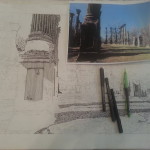
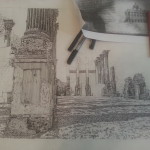
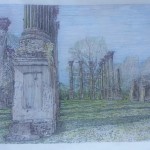

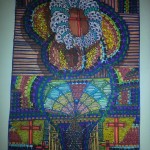

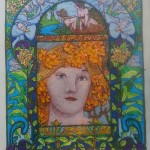

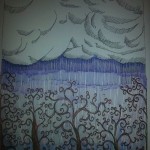
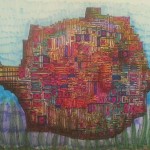
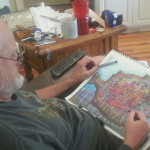






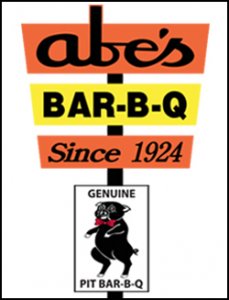



Speak Your Mind